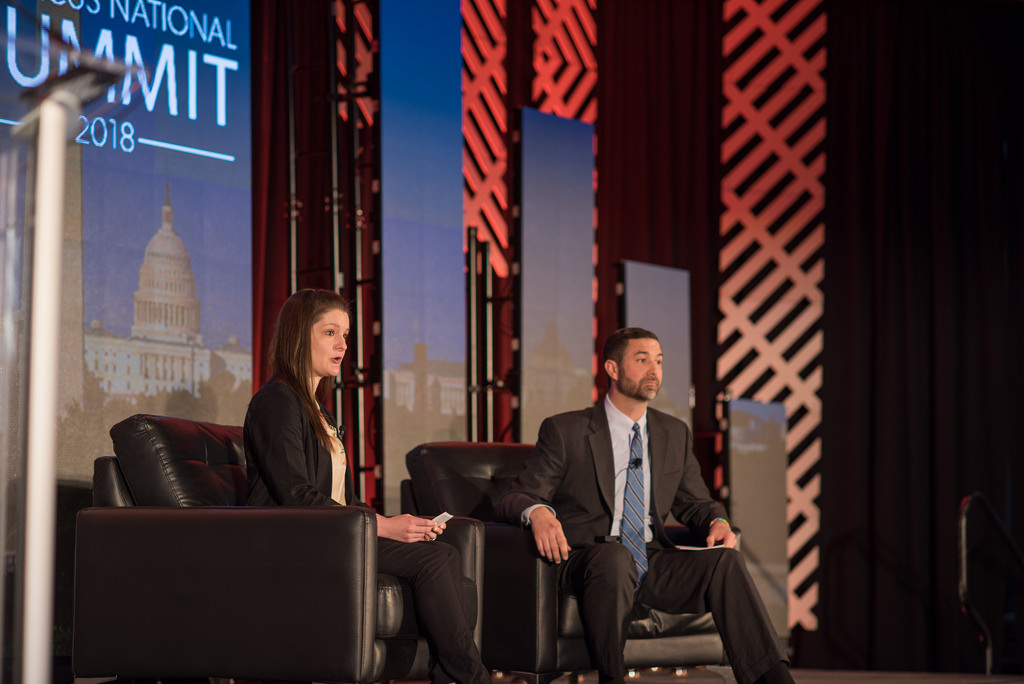
Today we’re used to engaging with government by tweeting, email, web surveys and more. But take a step back and think to 100 years ago—nothing was the same. The only way to interact with your government was to write letters, visit city hall in person or attend open forums.
But channels have shifted dramatically as technology has become available and citizens demand more from the public sector. At its core, channel shift is making information and services accessible on the channels that your customers are utilizing most.
As CitySourced writes, “The basic idea of channel shift is to take communication and shift it from one medium to another. Local governments have been shifting their communication to digital as technology continues to evolve. Today, communication has shifted to digital formats so there are numerous forms of communication that include email, forms on your website, live chat, social media, and even bots. The channel shifting process has been accelerated by the introduction of new technologies.”
Shifting to digital channels of engagement with citizens can be a great way for the public sector to save money and increase efficiency. And it’s essentially necessary as citizen demands for more availability, better technology and access increase.
But achieving channel shift is challenging when dealing with outdated tools. So how can governments adapt and move forward to maximize the necessary channel shifts that are already happening and that will continue in the future?
At our annual Granicus National Summit, public sector servants and tech and communications leaders explained how they’re making the most of available and modern technology and communications tools to make the most of the channel shift that public sector organizations must make today.
Dave Worsell, Vice President of Granicus Europe, talked about how government agencies in the UK have been forced to shift their channels and make the most of those shifts due to reduced budgets. In the mid-2000s, he explained, public sector budgets cratered. “The UK was in the doing ‘less with less’ stage,” he laughed. “But austerity is the mother of invention. When operating in that kind of scenario, you learn to change the way you you do things. You have to be creative.”
Agencies must be more strategic, he pointed out. “You must move from SOS comms,” he said. “And by SOS I mean ‘sending out stuff.’ You need to be more strategic. Define those outcomes. You have to do all of the following: Reduce avoidable contact and cut costs; reduce demand; generate more income; build trust and your reputation; and improve audience satisfaction.”
In short, he said, public channel shift must be about changing behaviors for the better. “Think like a commercial marketer,” he advised. “You are selling behavior change. Think about the outcomes and how you will drive those.”
Two public sector agencies also talked about how they made use of new technologies to achieve needed channel shift, meeting citizen needs and reducing costs and increasing efficiency along the way.
Doug Nick, Assistant Communications Director for Customer Outreach, Arizona Department of Transportation, talked about how his department made digital technology and common sense work for Arizona motorists.
“Our problem?” he asked. “Motor Vehicle Agencies are infamous for poor customer service.”
The answer? “Digital technology is a no-brainer. You can buy everything from auto parts to wine online. Why not provide motor vehicle services online, too?” he asked. “This lowers customer office traffic and lets people do things on their time at their convenience.”
AZDOT moved forward with digital platforms for motorist services. Today, about 65 percent of Arizona MVD transactions can be done online with more on the way.
One way they’ve moved forward is empowering all employees by using “huddle boards,” a standardized visual tool—sometimes just a whiteboard with sticky notes on it—meant to help teams collaborate on and visualize all the tasks necessary to complete a project.
“They measure performance, help set and achieve goals and alert people to problems,” Nick said. “They blend digital data and common sense to drive improvements.”
Today, blending common-sense citizen service initiatives with online tools, Nick said the average door-to-door experience time at the DMV has gone from 53 minutes in 2015 to just 20 minutes today.
Next, Lauren Mitchell, Communications Specialist, and Stephen Schatz, Communications Director, Maryland Department of Natural Resources, discussed how they took on channel shift by moving to a single, cohesive, analytics-driven email platform for all of their 1,300 staff over 10 major, diverse units.
With overlays and new email tools and strategies provided by Granicus, their department increased open rates, unified their strategies and their editorial voice, increased their subscribers by almost 200,000 and more.
“We achieved our goal of creating a united brand, growing our customer base, and reaching more people already doing business with in other areas,” Schatz said.
At the end of the day, governments must integrate digital with offline channels and send citizens messages where they will see them. Through channel shift and continual promotion, government can effectively increase ROI, reach and engagement.
